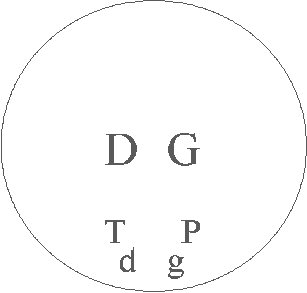The rhythm notation . . .
The following notation can be easier for drummers
and percussionists to use, compared to the usual notes and lines of conventional
sheet music. Because drum notes aren't sustained but struck once, it makes
sense to show the timing for these beats as single and equal. Rests are
measured by the same, single-beat units.
All the rhythms at this site, and in the book Roots Jam, use the following notation for drum beats--primarily those played on the west African djembe.
D: Dun
("Doon") = bass beat with left
hand
G: Gun ("Goon") = bass
beat with right hand
d: do ("doe") = rim
beat with left hand
g: go = rim beat
with right hand
T: Ta = slap beat
with left hand: sharp glancing stroke
P: Pa = slap beat
with right hand
- = space
About left and right hand notes:
Though the majority of the rhythms displayed here (and in the book Roots Jam 1) will show leading with the left hand, the handing can be reversed (and is for most rhythms in Roots Jam 2). In fact it makes sense to play both ways equally well, or to alternate for balance.
If you're just starting out and want to play a pattern starting with D/d/T with a dominant right hand, you can treat D's, d's and T's as right-hand beats, and G's, g's and P's as left-hand beats.
If you are left-handed a good choice for notation would be Vol. 1 of Roots Jam: Collected Rhythms for Hand Drum and Percussion. Roots Jam 2 and 3 use predominantly rhythm patterns leading with the right hand. View more information about these rhythm collection books (along with more lessons, tips, and notation) at my djembe rhythms website, djemberhythms.com.
Additional Notes:
X = low note on bass drum or two-tone bell
or percussion
x = any note on monotone percussion, or high
note on two-tone percussion. [Another way to show hi/lo notes is hi on first
line, lo on second; or by H and L]
k = bell note when played with bass drum (jun-jun)
x = underlined (or bold) note means stressed
or accented.
(d) = parenthesis means optional note(s) or
way to play a given note(s)
d__g__d: = triplet, with three notes played
within 2, 4 or 8 beat measure.
d_g: = two notes played as if two ends of a
triplet (d_-_g)
Notation Example:
_______ _______ _______ _______
| | | | | | | | | | | | | | | |
D - d g - g d g D - D - d g d g
![]() Click
for sound:
RealAudio - Track1-2
Click
for sound:
RealAudio - Track1-2
The notation form above, with the bars over the notes to aid in counting, is used in the book Roots Jam (vol. 1). It's easy to use either by handwriting or typing.
A variation, the so-called "box notation" method, is easier to follow visually, and is used in my second rhythm collection, Roots Jam 2. Notice also that the example below switches handing to lead with the "G":
1 |
. |
* |
. |
2 |
. |
* |
. |
3 |
. |
* |
. |
4 |
. |
* |
. |
G |
- |
g |
d |
- |
d |
g |
- |
G |
- |
G |
- |
g |
d |
g |
d |
new! keep up to date with my learning - and yours! - read my latest African Drumming Blog
 Cougar WebWorks
Cougar WebWorks 

